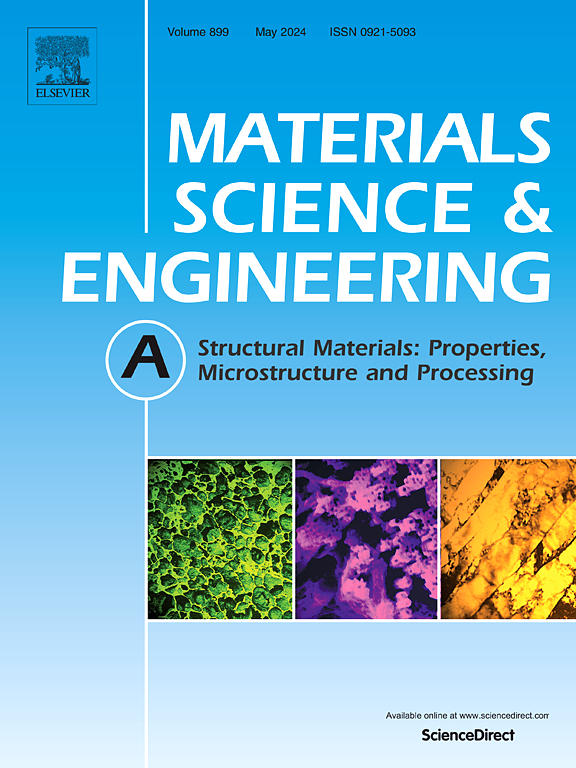Evolution of microstructures and microtextures during hot deformation of solid solution-strengthened superalloys
IF 6.1
2区 材料科学
Q1 MATERIALS SCIENCE, MULTIDISCIPLINARY
引用次数: 0
Abstract
Using Electron Backscatter Diffraction (EBSD) and Transmission Electron Microscopy (TEM), the evolution of microstructures and microtextures of the ERNiCrMo-3 alloy under various deformation conditions were investigated and the slip characteristics of dominant grains with different orientations were analyzed. The results indicate that both the overall structures, as well as the recrystallized structures without significant grain growth, form a <110> fiber texture. Additionally, a higher proportion of the original structure corresponds to a higher maximum measured pole density (PMAX). In contrast, the recrystallized structures with pronounced grain growth tend to rotate to <001> axis due to preferential grain growth. The micro textures are primarily characterized by -fiber textures composed of Brass, Goss, and P components under different deformation conditions. The Brass component is most prominent at the initial stage of dynamic recrystallization (DRX), while the Goss texture increases significantly under conditions favorable for DRX. As DRX progresses to completion, all texture components weakened. Grains with dominant orientations of Brass, Goss, or P have at least two slip systems activated, leading to the formation of dislocation wall substructures parallel to the slip planes within the grains. Orientation-dependent slip results in specific directions being softer or harder within the grains. Under the influence of slip, the ERNiCrMo-3 alloy readily forms a Brass texture. Due to differences in structural energy and Schmid factors between the Brass texture and other textures, the Brass component occupies a larger proportion under various conditions.
固溶强化高温合金热变形过程中组织与织构的演变
利用电子背散射衍射(EBSD)和透射电镜(TEM)研究了ERNiCrMo-3合金在不同变形条件下的组织和织构演变,分析了不同取向优势晶粒的滑移特征。结果表明:整体组织和无明显晶粒长大的再结晶组织均形成了<;110>;纤维结构。此外,较高的原始结构比例对应较高的最大测量极密度(PMAX)。相反,晶粒生长明显的再结晶组织倾向于旋转到<;001>;轴因晶粒优先生长。不同变形条件下的微观织构以黄铜、高斯和P组分组成的α-纤维织构为主。黄铜织构在动态再结晶初期最为突出,而Goss织构在有利于动态再结晶的条件下显著增加。随着DRX的完成,所有纹理成分都减弱了。黄铜取向、高斯取向或P取向的晶粒至少激活了两个滑移系统,导致在晶粒内形成平行于滑移面的位错壁亚结构。取向相关滑移导致颗粒内部特定方向变软或变硬。在滑移的影响下,ERNiCrMo-3合金容易形成黄铜织构。由于黄铜织构与其他织构在结构能和施密德因子上的差异,在各种条件下,黄铜成分所占的比例都较大。
本文章由计算机程序翻译,如有差异,请以英文原文为准。
求助全文
约1分钟内获得全文
求助全文
来源期刊

Materials Science and Engineering: A
工程技术-材料科学:综合
CiteScore
11.50
自引率
15.60%
发文量
1811
审稿时长
31 days
期刊介绍:
Materials Science and Engineering A provides an international medium for the publication of theoretical and experimental studies related to the load-bearing capacity of materials as influenced by their basic properties, processing history, microstructure and operating environment. Appropriate submissions to Materials Science and Engineering A should include scientific and/or engineering factors which affect the microstructure - strength relationships of materials and report the changes to mechanical behavior.
 求助内容:
求助内容: 应助结果提醒方式:
应助结果提醒方式:


